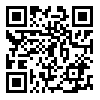Wed, May 21, 2025
Volume 7, Issue 1 (Winter 2021)
Iran J Neurosurg 2021, 7(1): 23-30 |
Back to browse issues page
Download citation:
BibTeX | RIS | EndNote | Medlars | ProCite | Reference Manager | RefWorks
Send citation to:



BibTeX | RIS | EndNote | Medlars | ProCite | Reference Manager | RefWorks
Send citation to:
Hosseininezhad M, Ghayeghran A R, Nasiri P, Saadat S, Esmaili K, Homaei Rad E et al . Estimation of Median Nerve Axonal Degeneration without Needle Electromyography. Iran J Neurosurg 2021; 7 (1) :23-30
URL: http://irjns.org/article-1-253-en.html
URL: http://irjns.org/article-1-253-en.html
Mozaffar Hosseininezhad *1 

 , Amir Reza Ghayeghran2
, Amir Reza Ghayeghran2 

 , Paria Nasiri2
, Paria Nasiri2 

 , Sajjad Saadat3
, Sajjad Saadat3 

 , Katayoun Esmaili2
, Katayoun Esmaili2 
 , Enayatollah Homaei Rad4
, Enayatollah Homaei Rad4 

 , Zahra Gholipour Soleimani5
, Zahra Gholipour Soleimani5 



 , Amir Reza Ghayeghran2
, Amir Reza Ghayeghran2 

 , Paria Nasiri2
, Paria Nasiri2 

 , Sajjad Saadat3
, Sajjad Saadat3 

 , Katayoun Esmaili2
, Katayoun Esmaili2 
 , Enayatollah Homaei Rad4
, Enayatollah Homaei Rad4 

 , Zahra Gholipour Soleimani5
, Zahra Gholipour Soleimani5 

1- Department of Neurology, Guilan Road Trauma Research Center, Guilan University of Medical Sciences, Rasht, Iran. , hosseininezhadm@gmail.com
2- Department of Neurology, Guilan Road Trauma Research Center, Guilan University of Medical Sciences, Rasht, Iran.
3- Neuroscience Research Center, Guilan University of Medical Sciences, Rasht, Iran.
4- Research Assistant Professor of Health Economics, Guilan Road Trauma Research Center, Guilan University of Medical Sciences, Rasht, Iran.
5- Department of Nursing, Neuroscience Research Center, Guilan University of Medical Sciences, Rasht, Iran.
2- Department of Neurology, Guilan Road Trauma Research Center, Guilan University of Medical Sciences, Rasht, Iran.
3- Neuroscience Research Center, Guilan University of Medical Sciences, Rasht, Iran.
4- Research Assistant Professor of Health Economics, Guilan Road Trauma Research Center, Guilan University of Medical Sciences, Rasht, Iran.
5- Department of Nursing, Neuroscience Research Center, Guilan University of Medical Sciences, Rasht, Iran.
Abstract: (2966 Views)
Background and Aim: The present study aimed to use the median nerve Compound Muscle Action Potential (CMAP) amplitude by stimulation at the palm instead of Abductor Pollicis Brevis (APB) needle Electromyography (EMG) for determining axonal loss in patients with Carpal Tunnel Syndrome (CTS).
Methods and Materials/Patients: This study was performed on 180 patients with CTS referred to the Electrodiagnostic (EDX) Center, Poursina Hospital, Guilan Province, Iran, in 2018-19. In this study, the APB needle EMG diagnostic test was used as the gold standard, and median nerve CMAP amplitude with stimulation at the palm and wrist were used to compare the two nerve stimulation tests.
Results: All of the cases with abnormal amplitude loss detected by median nerve stimulation at the palm also had an axonal loss in the needle EMG of APB. So this test could be a good indicator of axonal loss if there is an abnormality (sensitivity: 73%, specificity: 100%). The results with wrist stimulation were not as accurate as of the palm stimulation, and some cases with decreased CMAP amplitude of median nerve had normal needle EMG of APB muscle (sensitivity: 86.6%, specificity: 94.9%).
Conclusion: In cases with CTS, the abnormally decreased amplitude of the median nerve detected by stimulation at the palm could be a good indicator of axonal loss.
Methods and Materials/Patients: This study was performed on 180 patients with CTS referred to the Electrodiagnostic (EDX) Center, Poursina Hospital, Guilan Province, Iran, in 2018-19. In this study, the APB needle EMG diagnostic test was used as the gold standard, and median nerve CMAP amplitude with stimulation at the palm and wrist were used to compare the two nerve stimulation tests.
Results: All of the cases with abnormal amplitude loss detected by median nerve stimulation at the palm also had an axonal loss in the needle EMG of APB. So this test could be a good indicator of axonal loss if there is an abnormality (sensitivity: 73%, specificity: 100%). The results with wrist stimulation were not as accurate as of the palm stimulation, and some cases with decreased CMAP amplitude of median nerve had normal needle EMG of APB muscle (sensitivity: 86.6%, specificity: 94.9%).
Conclusion: In cases with CTS, the abnormally decreased amplitude of the median nerve detected by stimulation at the palm could be a good indicator of axonal loss.
Type of Study: Research |
Subject:
Basic Neurosurgery
Send email to the article author
| Rights and Permissions | |
 |
This work is licensed under a Creative Commons Attribution-NonCommercial 4.0 International License. |



